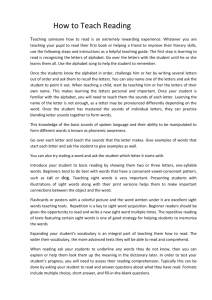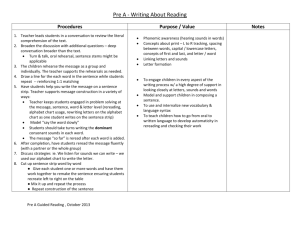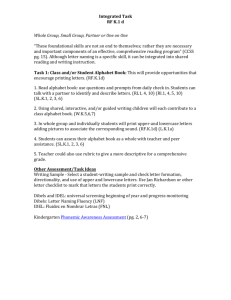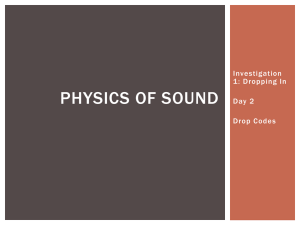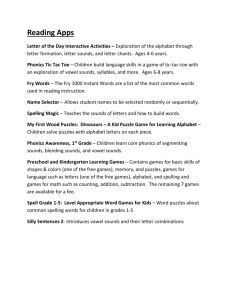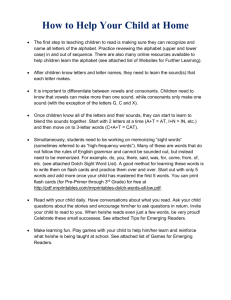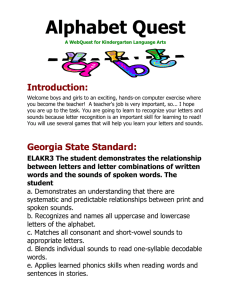Grade Level -K Unit Topic - letters, sounds, sentences, sight words
advertisement
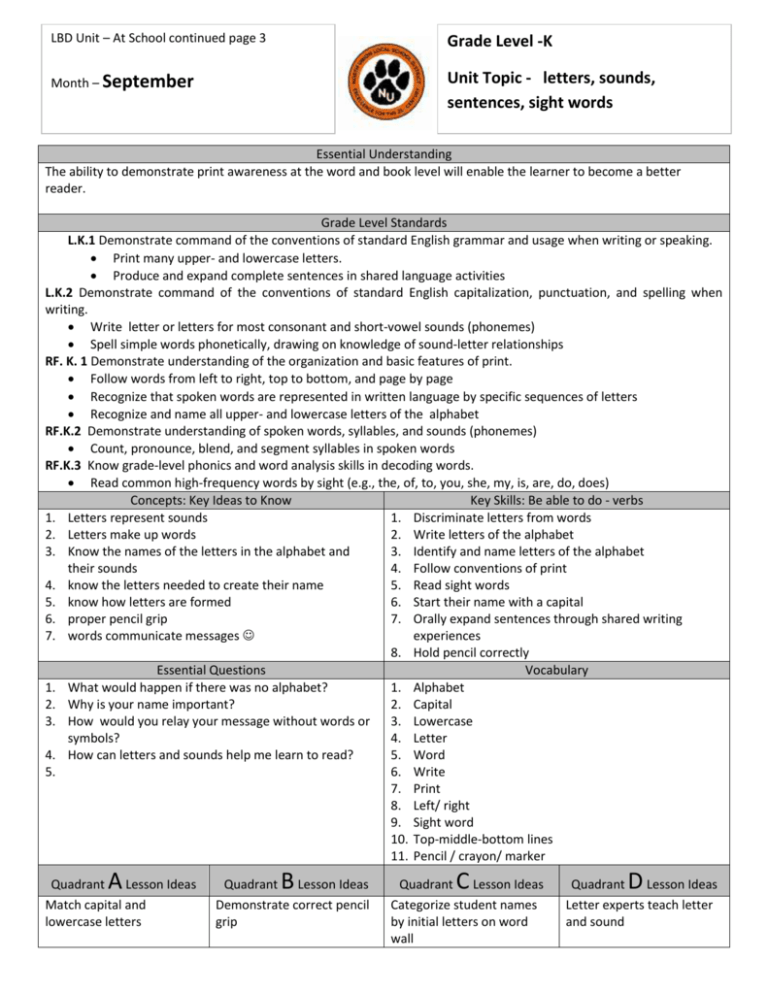
LBD Unit – At School continued page 3 Grade Level -K Month – September Unit Topic - letters, sounds, sentences, sight words Essential Understanding The ability to demonstrate print awareness at the word and book level will enable the learner to become a better reader. Grade Level Standards L.K.1 Demonstrate command of the conventions of standard English grammar and usage when writing or speaking. Print many upper- and lowercase letters. Produce and expand complete sentences in shared language activities L.K.2 Demonstrate command of the conventions of standard English capitalization, punctuation, and spelling when writing. Write letter or letters for most consonant and short-vowel sounds (phonemes) Spell simple words phonetically, drawing on knowledge of sound-letter relationships RF. K. 1 Demonstrate understanding of the organization and basic features of print. Follow words from left to right, top to bottom, and page by page Recognize that spoken words are represented in written language by specific sequences of letters Recognize and name all upper- and lowercase letters of the alphabet RF.K.2 Demonstrate understanding of spoken words, syllables, and sounds (phonemes) Count, pronounce, blend, and segment syllables in spoken words RF.K.3 Know grade-level phonics and word analysis skills in decoding words. Read common high-frequency words by sight (e.g., the, of, to, you, she, my, is, are, do, does) Concepts: Key Ideas to Know Key Skills: Be able to do - verbs 1. Letters represent sounds 1. Discriminate letters from words 2. Letters make up words 2. Write letters of the alphabet 3. Know the names of the letters in the alphabet and 3. Identify and name letters of the alphabet their sounds 4. Follow conventions of print 4. know the letters needed to create their name 5. Read sight words 5. know how letters are formed 6. Start their name with a capital 6. proper pencil grip 7. Orally expand sentences through shared writing 7. words communicate messages experiences 8. Hold pencil correctly Essential Questions Vocabulary 1. What would happen if there was no alphabet? 1. Alphabet 2. Why is your name important? 2. Capital 3. How would you relay your message without words or 3. Lowercase symbols? 4. Letter 4. How can letters and sounds help me learn to read? 5. Word 5. 6. Write 7. Print 8. Left/ right 9. Sight word 10. Top-middle-bottom lines 11. Pencil / crayon/ marker A Quadrant Lesson Ideas Match capital and lowercase letters B Quadrant Lesson Ideas Demonstrate correct pencil grip C Quadrant Lesson Ideas Categorize student names by initial letters on word wall D Quadrant Lesson Ideas Letter experts teach letter and sound Recite letters and sounds with a sound linking chart or song Model proper letter formation Memorize sight word songs Memorize alphabet song Analyze their own handwriting for proper letter formation Explore formation of letters by grouping them by their common traits Cats, dog, and ponies Oh my! Discriminate letter sounds using pictures and shared writing Discover that letters can be blended into words by using auditory blending activities Matching/ sorting letters Formative Assessments KRAL test Beginning of the year benchmark Hearing Sounds and Words Summative Assessments LBD theme Progress Test Performance Assessments Individual- cats and dogs and ponies, oh my – see Kdg shared folder If your name is on ______ pick it up!
